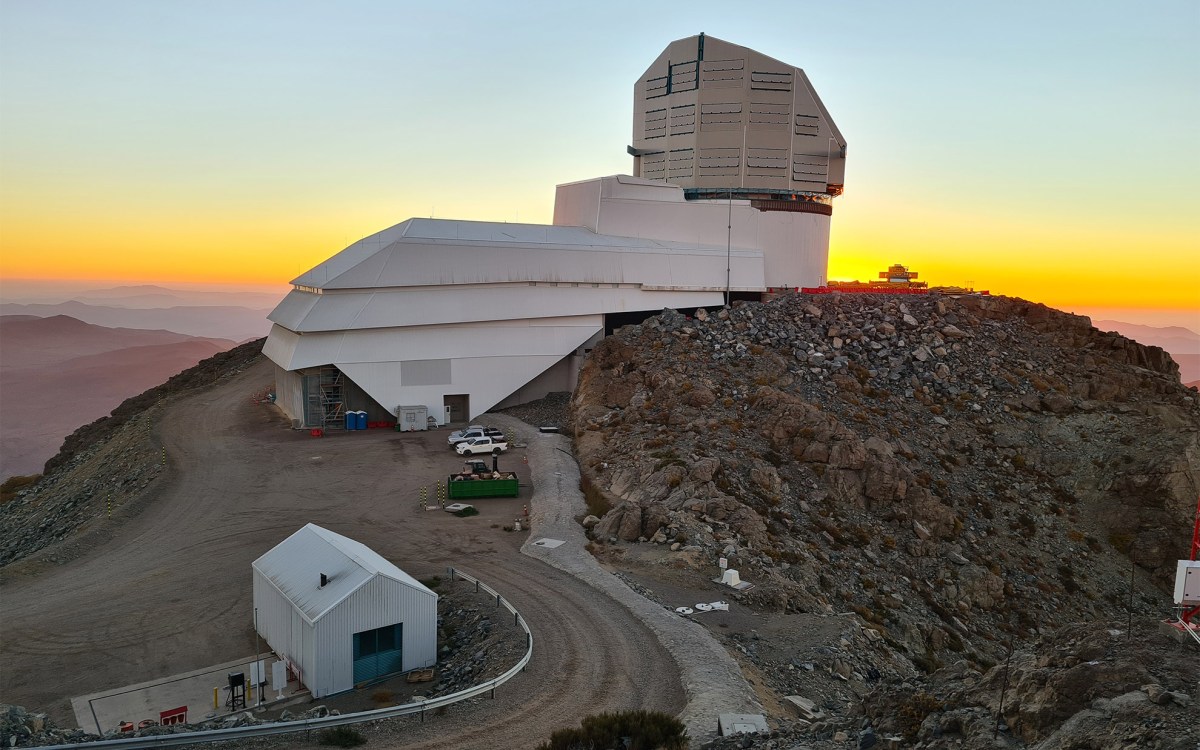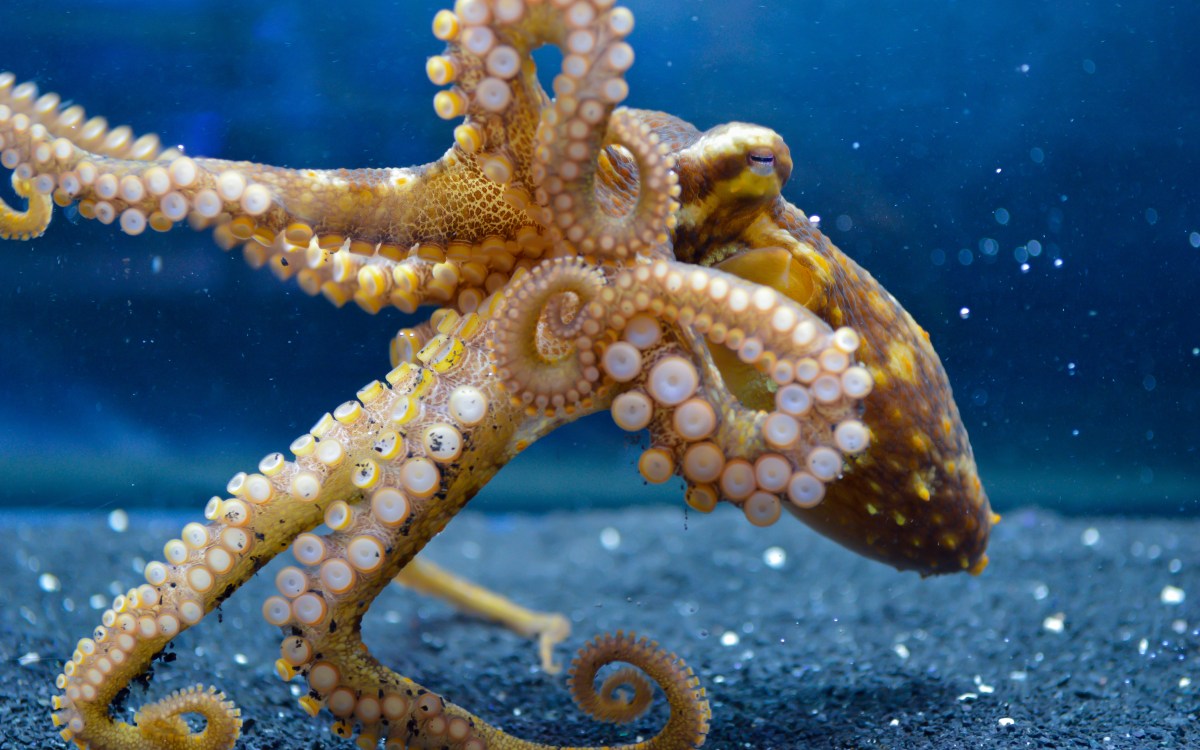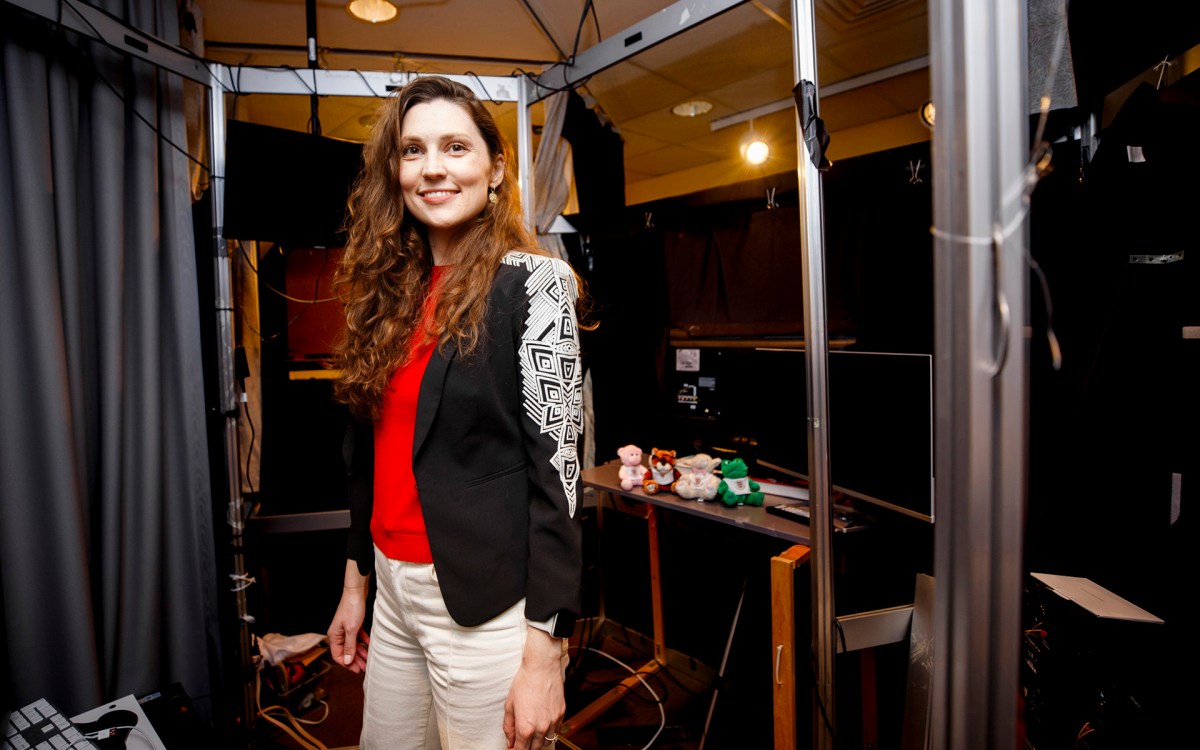Science & Tech
-

Can AI be as irrational as we are? (Or even more so?)
Psychologists found OpenAI’s GPT-4o showing humanlike patterns of cognitive dissonance, sensitivity to free choice

-

Stealing a ‘superpower’
Study finds some sea slugs consume algae, incorporate photosynthetic parts into their own bodies to keep producing nutrients

-

Reading skills — and struggles — manifest earlier than thought
New finding underscores need to intervene before kids start school, say researchers

-

Shining light on scientific superstar
Vera Rubin, whose dark-matter discoveries changed astronomy and physics, gets her due with namesake observatory, commemorative quarter
-

A taste for microbes
New research reveals how the octopus uses arms to sense chemical clues from microbiomes

-

Out of sight but not out of mind
By 15 months, children can learn the names of objects they’ve never seen

-
Do sports and statistics constitute a ‘dream team’?
Many argue it’s the reason the curse was finally reversed. A few say it has revolutionized the game. “Sabermetrics” — the statistical analysis of baseball data — pervades sports conversation today. But how many people are aware that analytical statistics can make powerful contributions to other sports, like say, pingpong? Well, for a start there are the more than 100 statisticians and sports enthusiasts — in this case, often one and the same — who came together at the Harvard University Science Center Sept. 29 for the first “New England Symposium on Statistics in Sports” (NESSIS).
-
Ancient practice sans theory
Move over, Archimedes. A researcher at Harvard University is finding that ancient Greek craftsmen were able to engineer sophisticated machines without necessarily understanding the mathematical theory behind their construction.
-
Colorizing classic statues returns them to antiquity
For artists of the Renaissance, the key to truth and beauty lay in the past. Renaissance artists assiduously studied the sculptures and monuments of Greece and Rome and emulated them…
-
Digging for solutions to energy crisis
In the 1970s, Iceland was one of the poorest countries in Europe. Today it is one of the richest, with a per capita GDP higher than that of Denmark, from which it won full independence in 1944.
-
Male voice pitch predicts reproductive success in hunter-gatherers
Deeper voice pitch predicts reproductive success in male hunter-gatherers, according to a new study from researchers with Harvard University, McMaster University, and Florida State University. This is the first study…
-
‘Hot’ ice could lead to medical device
Harvard physicists have shown that specially treated diamond coatings can keep water frozen at body temperature, a finding that may have applications in future medical implants.
-
CfA reveals Magellanic Clouds are first-time visitors
The Large Magellanic Cloud (LMC) and Small Magellanic Cloud (SMC) are two of the Milky Way’s closest neighboring galaxies. A stunning sight in the southern hemisphere, they were named after the Portuguese explorer Ferdinand Magellan, who explored those waters in the 16th century. For hundreds of years, these galaxies were considered satellites of the Milky Way, gravitationally bound to our home galaxy. But new research by Gurtina Besla of the Harvard-Smithsonian Center for Astrophysics (CfA) and her colleagues shows that the Magellanic Clouds are recent arrivals — on their first visit to the Milky Way’s neighborhood.
-
Biohybrid of elastic film and muscle cells packs a punch
In an innovative marriage of living cells and a synthetic substrate, bioengineers at Harvard University have found that a rubberlike, elastic film coated with a single layer of cardiac muscle cells can semi-autonomously engage in lifelike gripping, pumping, walking, and swimming.
-
Creating a computer currency
Computer scientists are using the latest version of peer-to-peer video sharing software to explore a next-generation electronic commerce model that uses bandwidth as a global currency.
-
Harvard astronomers share dark prize
Two teams who upset everyone’s ideas about how the universe works and its future will share the $500,000 Gruber Cosmology Prize for discovering that 70 percent of the universe is nothing but a strange form of energy.
-
Harvard launches major initiative to help design international climate agreements
Harvard University announced in early July a two-year project to help identify key design elements of a future international agreement on climate change, drawing on the ideas of leading thinkers from academia, private industry, government, and advocacy organizations, both in the industrialized world and in developing countries.
-
Oceans are back on Mars
Since spacecraft sent back the first close-up images of Mars more than 30 years ago, some experts have insisted that oceans once existed on the now dry, cold planet. Critics have maintained for decades that such an idea is the product of unrestrained imaginations. Now, a study published in today’s (June 14) issue of the British journal Nature reports new evidence that our neighbor in space once boasted an ocean or oceans as big, relative to planet size, as the Atlantic on Earth.
-
Rajan Sonik hopes to cure bodies while energizing hearts and souls
Rajan Sonik arrived at Harvard four years ago aspiring to a career in science or maybe law, but a 14-year-old boy with sickle cell disease Sonik met in his sophomore year through a hospital mentoring program changed everything.
-
Single spinning nuclei in diamond offer a stable quantum computing building block
Surmounting several distinct hurdles to quantum computing, physicists at Harvard University have found that individual carbon-13 atoms in a diamond lattice can be manipulated with extraordinary precision to create stable quantum mechanical memory and a small quantum processor, also known as a quantum register, operating at room temperature. The finding brings the futuristic technology of quantum information systems into the realm of solid-state materials under ordinary conditions.
-
‘Digital immigrants’ teaching ‘digital natives’
Students coming into universities today are ‘digital natives’ and fundamentally different in their use of technology than the ‘digital immigrants’ who teach them, according to John Palfrey, executive director of…
-
Center for Environment announces new fellows
From Sri Lankan tree frogs and Australian algae to the grasslands of East Africa, the research topics of the latest group of Harvard University Center for the Environment (HUCE) Environmental Fellows represent their diverse backgrounds. The five fellows — from five different countries — will begin their work this September, joining the five fellows from the program’s inaugural group (two of the first seven fellows, Peter Huybers and Valeriy Ivanov, left the program early for faculty positions at Harvard and the University of Michigan, respectively).
-
Making days longer than 24 hours
People at a research hospital in Boston have been living 24-hour, 39-minute days. They were part of an experiment to show that the 24-hour human sleep-wake cycle can be adapted to other biological rhythms like the longer days on Mars.
-
Forty percent of world lacks clean water, solutions sought
The pictures — of children with sunken eyes and shriveled skin; oxen being herded across a river where women clean their clothes and fill their pitchers; an African villager sipping…
-
Ingenious use of indigenous tree reaps award
The jatropha tree is a humble — some might even say homely — plant, with large, maple-like leaves and clusters of inedible fruit that, when mature, look too brown and shriveled to be of much use to anyone. But to thousands of rural eastern and southern Africans, the jatropha is a beautiful thing. It represents hope that they’ll someday have electric lamps to light their homes, refrigerators to keep medicines and vaccines cold in local clinics, and computers and telephones in the schools and orphanages — hope for sustainable energy. And on Tuesday (May 8), the people behind that hope were honored with the 2007 Roy Family Environmental Award in a day of events at the Kennedy School of Government (KSG).
-
Using Spitzer telescope, scientists create first map of extrasolar planet
For the first time, astronomers have created a rough map of a planet orbiting a distant sun-like star, employing a technique that may one day enable mapping of Earth-like worlds. Because the planet just charted is a gas giant and lacks a solid surface, the map shows cloud-top features. Using the Spitzer infrared space telescope, astronomers detected a bright hot spot that is offset from “high noon,” where heating is greatest.
-
Lizards shed light on species diversity
Some people are drawn to majestic racehorses, melodious songbirds, or cuddly puppies. Jonathan Losos has had a lifelong love affair with reptiles.
-
Ancient knowledge
It is 11 a.m. on a sticky tropical Saturday and Ian Graham is lying on his side in the dried grass before a 1,300-year-old stone building in the Maya city…
-
New tourism threatens desert ecosystems worldwide
The Department of Urban Planning and Design at the Harvard Graduate School of Design (GSD) hosted a conference April 4-5 titled “Desert Tourism: Delineating the Fragile Edges of Development.” Panel discussions with leading architects, planners, and developers explored the relationship between tourism, social development, and the architecture and landscapes of arid regions around the world.
-
Libraries, museums meet with IT
The ability to search the actual text of millions of books — instead of just titles or summaries — will change the way students and academics conduct research, revealing a host of new sources invisible to current search methods, a Harvard University Library official working on the Google project said on March 28.
-
Collaboration yields first citywide network of wireless sensors
Harvard University, BBN Technologies, and the city of Cambridge have begun a four-year project to install 100 wireless sensors atop streetlights in Cambridge, Mass., creating the world’s first citywide network of wireless sensors.
-
Warming may not spark tree growth
A bright spot in the gloomy global warming picture has been scientists’ predictions that at least some carbon dioxide will be removed from the atmosphere by a burst of growth from tropical forests. New research from the Arnold Arboretum, however, questions that prediction, finding that trees in two forests on opposite sides of the world have been growing dramatically slower, not faster, as temperatures have risen over the past 20 years.
-
Bradford Cannon
Bradford Cannon, a caring, talented, imaginative plastic surgeon at the Massachusetts General Hospital (MGH) was an acknowledged surgical pioneer for much of the twentieth century. He was born in Cambridge, Massachusetts, in 1907, to Walter Bradford Cannon born in Prairie du Chien, Wisconsin, and Cornelia James Cannon of Cambridge, MA. A year later his father became the Higginson Professor of Physiology at HMS. Brad Cannon graduated from Harvard College in 1929 and Harvard Medical School in 1933.
-
Prof. Lene Hau: Light matters
In 2007, Professor Hau expanded upon her ’05 light-stopping breakthrough by transforming light into matter, and then back again.
-
Undergrads to compete at Programming Contest
A group of Harvard undergraduates will travel to Tokyo to compete in the Association for Computing Machinery’s 31st annual International Collegiate Programming Contest (ACM-ICPC) on March 12-16. More than 6,000 teams, representing 1,756 universities from around the globe, participated in the regional competitions last fall. The top 88 teams earned coveted spots on the 2007 ACM-ICPC World Finals roster. The Harvard team is one of only 20 U.S. teams scheduled to compete in the World Finals.
-
Medieval Islamic architecture presages 20th century mathematics
Intricate decorative tilework found in medieval architecture across the Islamic world appears to exhibit advanced decagonal quasicrystal geometry – a concept discovered by Western mathematicians and physicists only in the 1970s and 1980s. If so, medieval Islamic application of this geometry would predate Western mastery by at least half a millennium.


